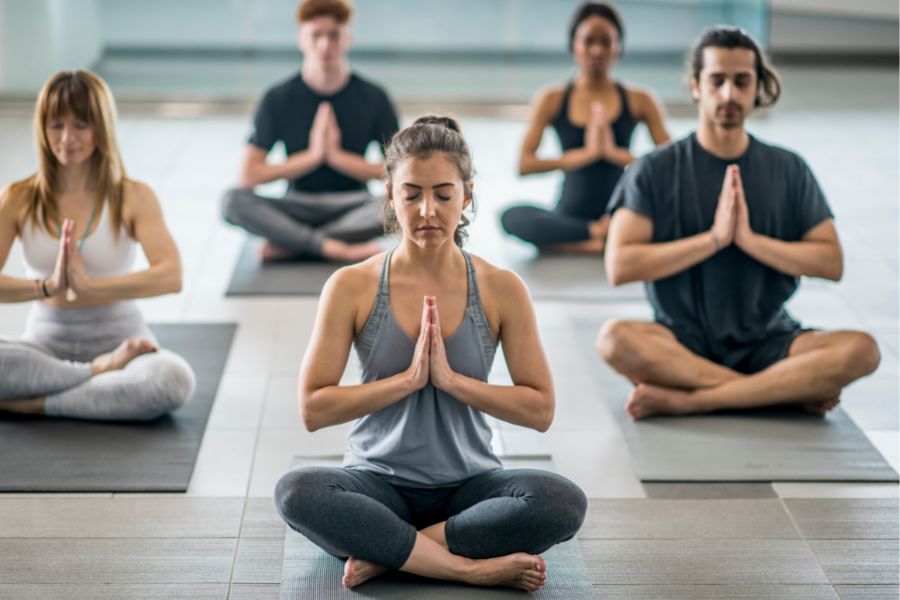About: What Are the 7 Types of Meditation?

There are various forms of meditation. Basic mindfulness meditation involves sitting quietly and focusing on breathing and a mantra. The practitioner must observe their body sensations and parts sequentially, naming them as they occur. The practice should encourage acceptance of emotions without judgment. Meditation techniques vary greatly, but there are many common ones. Read on to learn about them. We’ll explore a few of them in this article. Let’s start with basic mindfulness meditation.
What Are the 7 Types of Meditation?
Guided meditation
There are several different forms of meditation. Guided meditation involves listening to someone lead you through the process. You can find a class, an app, or even a guru for this type of meditation. You can also meditate in silence without a guide. Both forms offer benefits. A few drawbacks of guided meditation include the distracting nature of the instructor’s voice and the use of sound vibrations.
Guided meditation has a number of benefits. It is often used to introduce the practice of meditation to people who are new to it. It involves imagining sensory experiences or an activity that relieves stress. You may also use music, singing bowls, or background noise to help you relax. A guide will instruct you throughout the process, guiding you through the practice and reeling in distracting thoughts. Guided meditation is great for beginners who aren’t used to sitting quietly, and it is also beneficial for people who have trouble staying focused.
In modern psychology, guided meditation emphasizes the role of attention in the practice. Many researchers attribute the success of guided meditation to the fact that a person’s mind is conditioned to focus on the present without thinking about the past or the future. Similarly, a person who practices mindfulness meditation regularly has denser brain tissue and larger areas of the brain, indicating more connections. The benefits of guided meditation are numerous, and the benefits can be substantial.
Mindfulness

The eight-week program, “Mindfulness-based stress reduction,” is a secular version of meditation. It is designed to help people reduce stress, anxiety, pain, and depression. Despite its religious roots, mindfulness is becoming more mainstream. Many people have found it useful for a variety of different reasons, including assisting with their personal lives. But is it really beneficial? The answer to that question depends on your own personal beliefs.
While some people are skeptical, others are firmly convinced. For example, the bestselling video game “Mightier” encourages players to slow their hearts by breathing deeply. The app is a great introduction to mindfulness for teens, and it requires a heart rate monitor. If you’re worried about meditating with children or teenagers, you can try one of the many mindfulness games available. But if you’re not comfortable with video games, a good book to start with is “Sitting Still Like a Frog.”
A deep listening exercise is similar to deep seeing. In it, you sit quietly and listen to sounds that surround you. These sounds can be close or far away. Spend three to five minutes doing this, and notice what you hear. During this time, you should feel calm and present. As the practice grows, you’ll be able to notice things that you normally wouldn’t notice, including your body and mind. If you’re still learning about mindfulness, don’t worry. It will take time.
Also Read: Prosperity Sketch Reviews 2022
Insight meditation
One of the most common types of meditation is insight meditation, also known as Vipassana. It reveals the truth about existence in a definite order. Through practice, an individual can experience the progression of insight. One insight is that the body is composed of separate mental and material phenomena, which are the physical sensations and awareness. The mind often wanders when meditating, but advanced practitioners of meditation are able to overcome this problem and return to the physical sensations of their breath.
Vipassana is one of the most common forms of Buddhist meditation. It is the basis for all other Buddhist meditations. The main goal of Vipassana meditation is to explore the body-mind connection. In this form, a person focuses on being the “watcher” – an open, nonjudgmental awareness of consciousness. In this type of meditation, one focuses on the breath as a key factor in achieving insight.
Currently, taxonomies are used to categorize the various meditation practices. This way, researchers can map the many types of meditation. But the diversity of practices makes it difficult to define a single form of meditation. The authors recommend using a single-case research design because it allows for high-resolution recording of specific changes over time. If you’re interested in learning more about the benefits of meditation, check out our article!
Zazen meditation

Zazen is a style of Zen meditation that emphasizes the power of concentration. Zazen students begin by focusing on their breath at the tanden and hara, counting and watching their breath. Some zazen practitioners use mantras or other methods instead of counting their breath. Zazen practitioners typically continue for several minutes, until they reach a state of one-pointedness, known as joriki.
The goal of Zazen meditation is to integrate the body, breath, and mind, resulting in a relaxed state of mind. Practicing this meditation technique consistently can transform your experience of meditation. One of the most basic poses is the Burmese position, which involves sitting cross-legged with flat feet. This position is the most basic of the seven meditation postures. In addition, practicing the seated position regularly is essential for maximizing your meditative benefits.
Practice the proper posture when performing Zazen meditation. A zafu pillow is an essential piece of equipment. The zafu pillow is designed for use during Zen meditation and can be purchased online. A comfortable seat is essential. Whether you choose to sit upright or lie flat, you should sit in a comfortable position and try to find inner peace. Zazen meditation is based on Buddhist psychology and encourages the practitioner to turn inward and look for their own inner peace.
Mindfulness practice
There are seven different types of mindfulness practice meditation techniques. These techniques all seek to help us better understand and appreciate the present moment. Mindfulness is about being present in the moment and accepting the feelings, thoughts, and sensations that arise. To start a practice, you need to sit comfortably and focus on your breath. By staying present in the present moment, you can make more of an effort to appreciate life and connect with others on a deeper level.
The basic forms of mindfulness practice meditation involve sitting quietly, focusing on your breathing and a mantra or image. The goal is to notice your body’s sensations and identify them sequentially. You can also try imagining your thoughts as clouds moving across the sky. If you are unable to sit still during your first attempt, try again later. This practice helps you develop your ability to accept your feelings and be patient. Some of the more popular forms of mindfulness practice meditation are listed below.
Breathing meditation is a popular form of mindfulness practice. It involves sitting cross-legged on the floor and maintaining your spine straight. The next step is developing concentration, which involves paying close attention to your breath and the movement of your abdomen. Over time, you can focus on the air passing through your nostrils. By practicing meditation in this manner, you will develop self-control, limit anxiety, and enhance your well-being.
Mindfulness practice with color-coded crystals
If you want to increase your mindfulness practice, consider using crystals to achieve your goal. Crystals can be used as a tool for meditation, sleep, and other spiritual practices. These stones are a natural source of relaxation. Each one has different metaphysical properties and benefits, making it important to find a suitable one for your needs. By setting a positive intention and using the stone as a focal point, you can begin your practice with ease.
Using a crystal to practice mindfulness requires you to become aware of the present moment. To do this, you must be able to ground yourself and communicate with the crystals. You must trust yourself and ask permission to use the crystals’ energy. You may be able to feel the grounding through your intuition. If you have trouble getting grounded, you can try a guided crystal meditation. These techniques can help you reduce stress and overcome emotional problems.
The stone is ideal for beginners because it helps you tune in and focus on the present moment. It is also helpful for releasing negative feelings and dealing with the root causes of anger. Clear quartz is the perfect beginner crystal and can help you clear your mind. It is also the most versatile stone and is useful for clearing negative energy and balancing the body. When using a crystal to practice mindfulness, it is important to remember to pick one that is appropriate for your needs.
Mindfulness practice with prayer
It is possible to integrate your spiritual practices with your daily mindfulness practice. Christian mindfulness exercises can help you focus on God and see him in your daily life. The following are 7 simple Christian mindfulness exercises you can do for five minutes a day. Start by focusing on your breathing. Breathe in and out deeply and observe the physical environment. If you are anxious, repeat a two-word prayer. This practice can help you feel calmer and more at peace.
In addition to being able to focus your attention on the present moment, practicing mindfulness without meditation involves becoming completely immersed in your activity. This could be something as simple as washing the dishes or taking a shower. In contrast, prayer, on the other hand, is a way to connect with a higher power. By engaging in prayer, you are lifted above yourself and immersed in the love of the deity or god you choose. For some people, prayer is a lifeline, and incorporating mindfulness exercises into your daily life is a way to reconnect with the divine.
While secular mindfulness practices focus on self-focus, Christians believe it is compatible with a biblical worldview. A biblical approach to meditation and mindfulness requires a vertical relationship with God. Because of this, they use it in a Christian context, often integrating it with Scripture. Because of its benefits, it is an excellent tool for Christians to use for therapy or as a spiritual practice. The Christian approach to mindfulness is more holistic and focuses on connecting with God, not on one’s own self.


